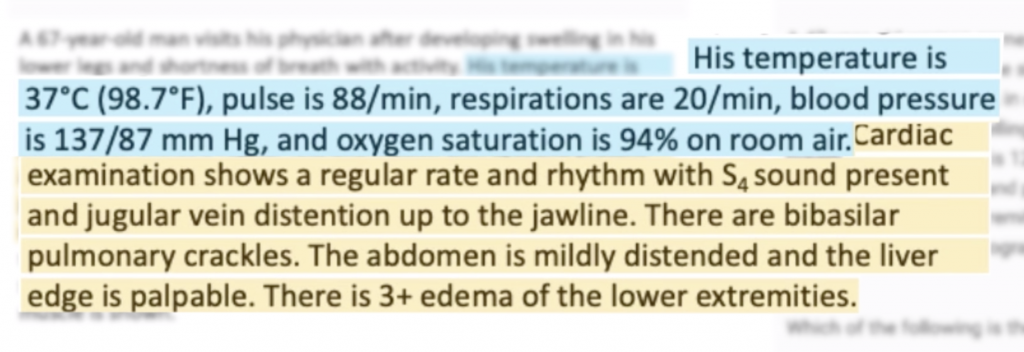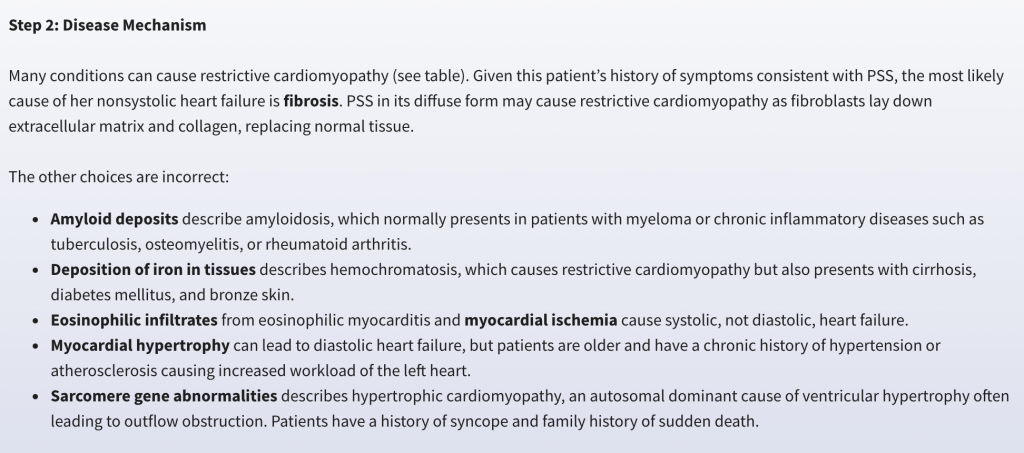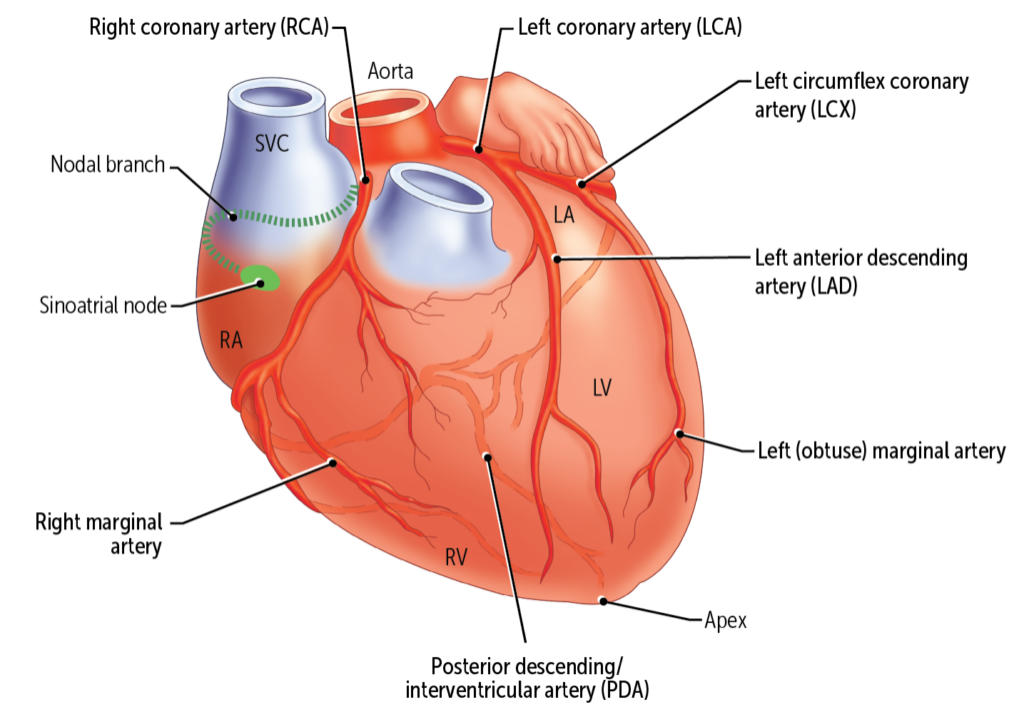Experience the Upgraded Step 1 Qmax for USMLE Step 1
If you’re a student preparing for the USMLE Step 1, you want to make sure that you’re testing yourself on questions that are comparable to what you’re going to see on the big day. And, when you get a question wrong, you want to know why.
At USMLE-Rx, we’ve been monitoring the changes that the USMLE has been making to the USMLE Step 1 exam and updated our questions accordingly.
How Have We Adjusted Qmax to Better Match the USMLE Step 1?
When you take one of the NBME practice exams, you’ll find that the stems of the questions have gotten much more focused; they’ve cut out extraneous information and removed pertinent negatives, which are more likely to appear on the USMLE Step 2 CK.
- Old question: complete set of vitals (mostly normal), EXTENSIVE set of physical findings

- New question: blood pressure only. Abbreviated physical exam findings (most characteristic findings in heart failure). More unequivocally ‘preserved’ ejection fraction

- And while the patients have different demographics and comorbidities, both questions give you a low-voltage EKG that’s very helpful in narrowing down the differential diagnosis.
So we’ve focused the question, but haven’t compromised difficulty since identifying “heart failure” is probably the most basic step in the question and doesn’t really rely on the vitals. In fact, you’ll find that many of our revised questions now have 6 answer options, each carefully chosen based on common distractors or misconceptions.
How We Provide Step-by-Step Explanations in Step 1 Qmax
However, the most significant change we’ve made is in our explanations – where the learning REALLY occurs. Classically, we used to do what MOST question banks do: explain how the diagnosis is made in a loose narrative style and give the background information on the correct diagnosis before explaining why the other answer choices were wrong. With our revised Step 1 QMax question bank, we’ve refocused our explanations so that they begin with a step-by-step breakdown that shows you how to arrive at the right answer.
- Upfront are the elements of the question that allow you to make the diagnosis as a real clinician might, sequentially narrowing the diagnosis down from the syndrome of “heart failure” to “non-diastolic heart failure” to “restrictive cardiomyopathy”, then matching it to the patient’s comorbidities to identify the most likely etiology as progressive systemic sclerosis.

- Second, since the answer choices all propose a MECHANISM, step 2 proceeds to explain the pathophysiology in a way that allows you to identify the correct answer choice.

But whether it’s a one-step, two-step, or three-step question, you’ll see a sequential dissection of the explanation. If you got the question wrong, you’ll be able to pinpoint exactly where you went wrong – whether you came up with the wrong diagnosis in step 1, or you didn’t know the physiology in step 2. If you got the question RIGHT but don’t want to get bogged down reading several paragraphs that you assume you already understand… well with our new streamlined, stepwise approach you can quickly ensure that you’re getting the question right for the right reasons. And if you got it wrong, you will know exactly which step gave you the problem.
Over the next few weeks, ALL of the questions in Step 1 Qmax are going to reflect this sharpened approach. And with this MAJOR upgrade, we plan to turn Step 1 QMax into an unparalleled tool to both test your medical knowledge AND hone your test-taking skills in a style that’s true to the changing nature of the USMLE.
Start a free trial today and see the difference for yourself! Along with being able to preview the USMLE-Rx Step 1 Qbank, you’ll also get access to:
- Our entire Rx Bricks catalog, with over 800 digital learning modules designed to lead you through the preclinical curriculum
- Over 14,000 Flash Facts, with Study Stream’s spaced repetition algorithm
- Over 1300 Express Videos, which explain each of the key topics in First Aid for the USMLE Step 1
- A platform integrated with First Aid®




